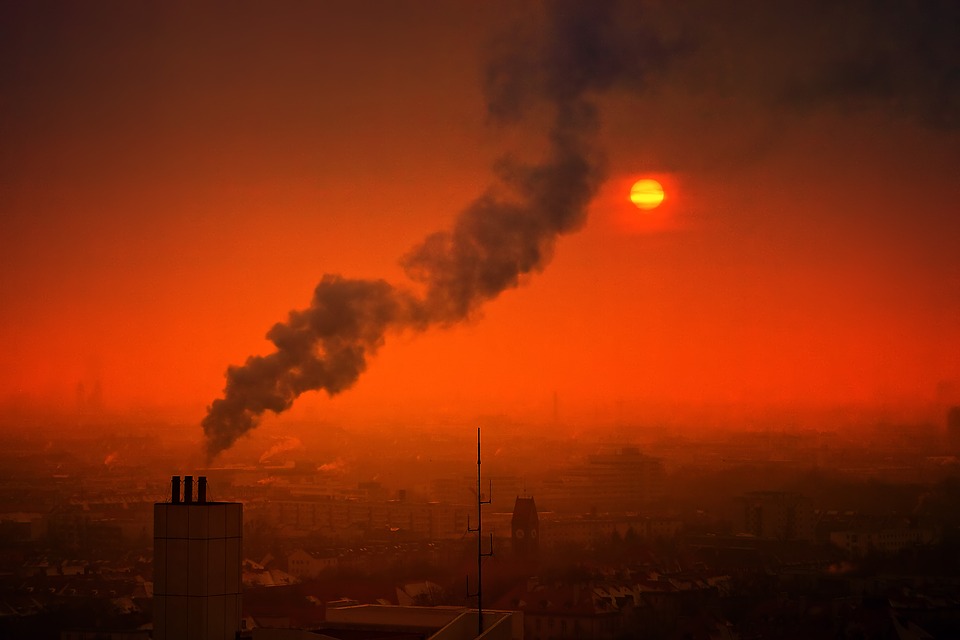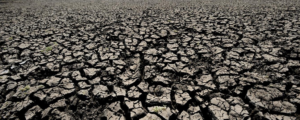What is the problem and how much of a problem is it?
Human health and the environment are inextricably linked – a healthy environment is a vital prerequisite for human health. Globally, known environmental risks result in about one quarter of all deaths and disease, which equates to about 13 million deaths every year.1
In this article, we focus on two interlinked environmental issues that pose a significant (and existential) threat to human health: air pollution and climate change. It can be argued that in fact these two issues are ‘two sides of the same coin’. For instance, air pollution incorporates greenhouse gas emissions. Furthermore, air pollution from diesel engines can end up in the most remote places around the globe, landing on the ice and snow in polar regions. This can lead to warming, as less sunlight is reflected back into space.2
Air pollution is estimated to kill 7 million people every year around the world. Staggeringly, more than 9 out of 10 people live in places where air quality exceeds the limits set by the World Health Organization (WHO).3 Worldwide, outdoor air pollution accounts for 29% of all lung cancer deaths and disease, 17% of all acute lower respiratory infection deaths and disease, 24% of all stroke deaths, 25% of all ischaemic heart disease deaths and disease and 43% of all chronic obstructive pulmonary disease deaths and disease. Moreover, air pollution can lead to reduced lung function, recurrent lung infections and aggravated asthma in children. Air pollution exposure during pregnancy has been linked with low birth weight and preterm births.4
Air pollutants of significant concern are; particulate matter (a complex mixture of extremely small particles and liquid droplets), ozone, nitrogen dioxide and sulphur dioxide.4
“There is no doubt that climate change is a health emergency…Climate change will cause higher mortality and morbidity from heat stress… severe weather events … and vector-borne disease. Climate change will cause food insecurity from declines in agricultural inputs… and a higher incidence of mental ill-health.”
– Dr Tony Bartone, President of the Australian Medical Association (AMA)5
The Intergovernmental Panel on Climate Change defines climate change as a change in the state of the climate that persists for an extended period of time, typically decades or longer. This refers to change due to natural variability or change that results from human activity.6
What is the difference between climate change and global warming?
Climate change is a complex driver of poor health by negatively affecting the social and environmental ingredients of good health. These include clean air, access to safe drinking water, access to sufficient and nutritious food and secure shelter. It is estimated that between 2030 and 2050, climate change will result in approximately 250 000 additional deaths every year, largely due to increases in malnutrition, malaria, diarrhoea and heat-related illness.7
Image. Drought (courtesy of WHO)7
Ultimately, climate change will affect the health of all populations. For the moment, however, some are more vulnerable than others. Populations in small island nations, coastal regions, megacities, alpine regions and the polar areas are the most vulnerable.7 Also, areas with weak health systems and infrastructure – which exist mostly in developing countries – will be the least able to deal with the challenges of climate change, further entrenching existing global inequalities.8
Get on top of your general health
Find and instantly book affordable GPs within Australia
How did it come to this?
Human activities – particularly the use of fossil fuels – have resulted in the release of enormous amounts of greenhouse gases that have trapped extra heat in the earth’s lower atmosphere, affecting the world’s climate.7
Over the last 130 years, the world has warmed by around 0.85°C. Sea levels are rising, glaciers are melting and rain patterns are changing. Extreme weather events, such as heat waves and severe storms, are becoming more frequent and more intense.7
Of course, there are climate change deniers and skeptics who often point to historical periods to suggest that global warming (just one aspect of climate change) is not a new phenomenon. Such epochs often cited include the Little Ice Age (between 1300 and 1850) and the Medieval Warm Period (between 800 and 1200). However, climate scientists have highlighted that the current period of global warming is different on two accounts. Firstly, it is global. While the Little Ice Age and Medieval Warm Period only affected certain regions of the planet, current global warming is being felt everywhere at the same time (with the exception of Antarctica). Secondly, the speed in which temperatures are increasing is unprecedented in the last 2,000 years.8
Check out these articles: ‘How has climate changed?’ from the Australian Academy of Science, and ‘Climate change: We haven’t experienced anything like this in the past 2,000 years’ from ABC news.
In most developing countries, air pollution has become worse in recent years. Increasing power plant emissions due to an increased demand for urban power, and the skyrocketing use of private motor vehicles, are two of the major contributing factors. Building energy-inefficient heating and cooling systems, industrial emissions from industries that are often in close proximity to urban residential areas, burning of agricultural waste and the use of solid fuels for cooking and heating (e.g. wood fires) are also important contributors to urban air pollution issues.9
What can we do about it?
Given the complex and multifaceted nature of climate change and air pollution, there is a vast range of international and national-level actions, as well as individual choices, that have the potential to reduce greenhouse gas emissions and the emissions from other air pollutants.
An article from BBC, titled ‘Ten simple ways to act on climate change’, outlines certain evidence-based ways that individuals can make a difference. Some of these are:10
- The number one goal should be to limit the use of fossil fuels, including coal, oil and natural gas, and substitute them for cleaner renewable energy sources. As an individual, this means aiming to drive and fly less, switching to a ‘green’ energy provider and changing what you buy and eat.
- Changing how industries are run or subsidised. This means exercising your rights as a citizen and as a consumer, to avoid stocks in fossils fuels, or banks and other financial institutions that invest in high-emission and environment-harming industries.
- Aim to drive as little as possible. Cars are more polluting compared with other modes of transport, such as public transport. Better yet, active transport modes (e.g. walking, cycling) are a great way of achieving a healthy amount of daily physical activity.
- Consider changing to a mindful diet [Link to: food systems article]. After fossil fuels, the food industry is one of the most significant contributors to climate change.
- Shopping differently can make a difference. The clothing industry contributes to about 3% of the total produced global CO2 emissions.
- Of course, flying might be unavoidable in some circumstances. In this case, consider offsetting your emissions with a trusted project, such as those set out by the UN Climate Convention.
References
- World Health Organization (online). Health, environment and climate change: Report by the Director-General [accessed 6 September 2019]. Available from: URL link
- UN Environment (online). Air pollution and climate change: two sides of the same coin [accessed 6 September 2019]. Available from: URL link
- World Health Organization (online). Air pollution [accessed 6 September 2019]. Available from: URL link
- World Health Organization (online). Ambient air pollution: Health impacts [accessed 6 September 2019]. Available from: URL link
- Australian Medical Association (online). Climate change is a health emergency [accessed 6 September 2019]. Available from: URL link
- United Nations Framework Convention on Climate Change (online). Fact sheet: Climate change science [accessed 11 Sep 2019]. Available from: URL link
- World Health Organization (online). Climate change and health [accessed 6 September 2019]. Available from: URL link
- ABC News (online). Climate change: We haven’t experienced anything like this in the past 2,000 years [accessed 11 September 2019]. Available from: URL link
- World Health Organization (online). Health, environment, and sustainable development [accessed 6 September 2019]. Available from: URL link
- BBC (online). Ten simple ways to act on climate change [accessed 6 September 2019]. Available from: URL link
All content and media on the HealthEngine Blog is created and published online for informational purposes only. It is not intended to be a substitute for professional medical advice and should not be relied on as health or personal advice. Always seek the guidance of your doctor or other qualified health professional with any questions you may have regarding your health or a medical condition. Never disregard the advice of a medical professional, or delay in seeking it because of something you have read on this Website. If you think you may have a medical emergency, call your doctor, go to the nearest hospital emergency department, or call the emergency services immediately.









